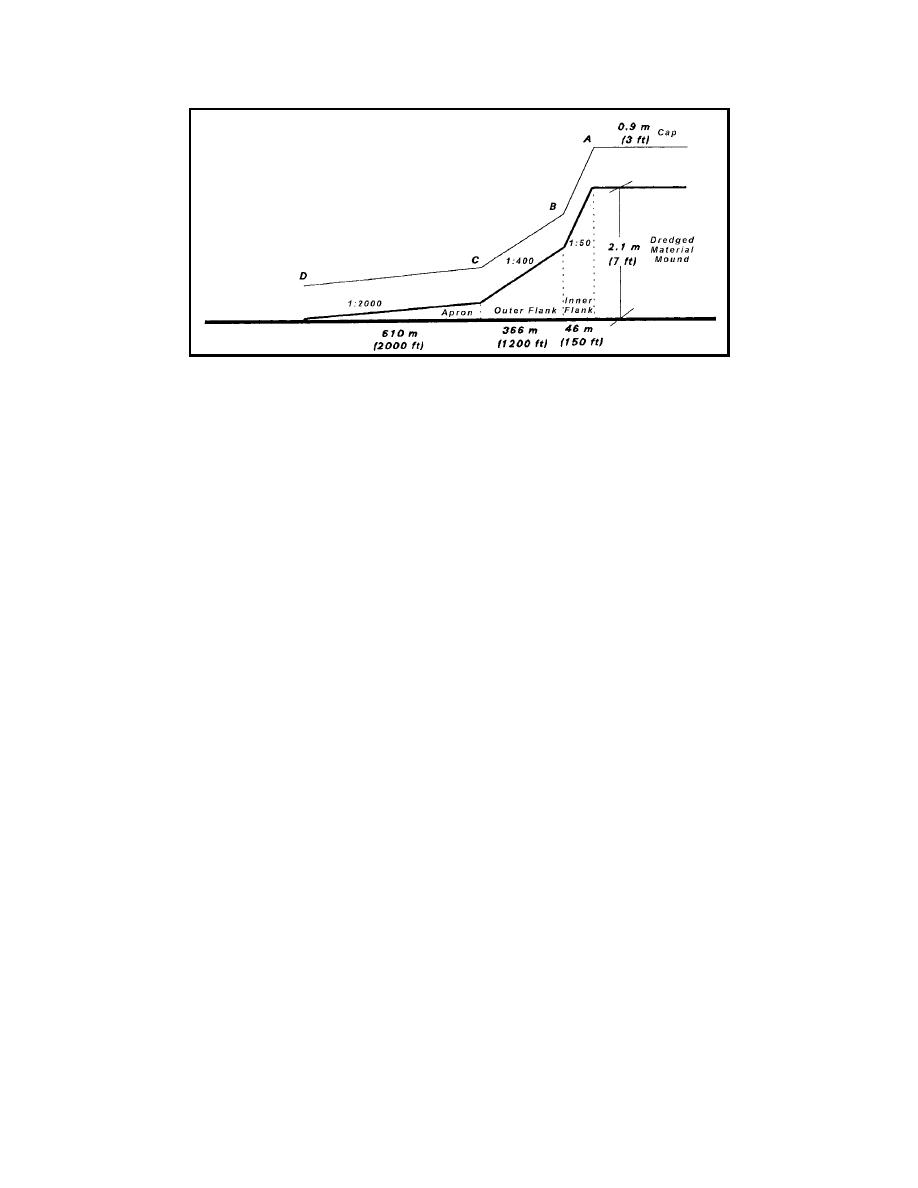 |
||
|
|
||
|
Page Title:
Effect of Placement Operation on Required Cap Volume |
||
| |||||||||||||||
|
|
 Figure H3. Cap slope length calculation
Effect of Placement Operation
on Required Cap Volume
A number of operational factors should be considered in computing required
cap volume. These factors include the "full" cap thickness versus "average" cap
thickness, the required cap thickness over the apron, and how far beyond the
contaminated boundary the cap should be placed. The following paragraphs
discuss each of these factors in turn. In general, cap volume to contaminated
sediment volume ratios of 1:2 to 1:5 have been used for capping projects. While
the following paragraphs describe how to compute specific cap volume require-
ment, some generalizations can be made. Higher cap to contaminated material
ratios will be found for projects that use thin mounds, those consisting of main-
tenance material that is fine grained with low shear strength, where barges
placing contaminated material will not be required to stop, and sites with deeper
water. Also, for smaller volume contaminated sediment projects, the apron will
tend to occupy an increasingly large percentage of the total area, greatly increas-
ing required cap volume to contaminated sediment volume ratio (particularly if
the full cap thickness is required over the entire apron). Lower cap to contami-
nated sediment volumes can be expected for thicker mounds, those consisting of
material with high shear strength, mounds placed in shallow water, where barges
come to a complete halt or are moving at low speeds (less than 1/2 to 1 knot).
Achieving full cap thickness over the entire contaminated mound footprint is
nearly impossible to accomplish without placing a considerable amount of addi-
tional material over that required for a level cap. This is because underwater
placement is difficult to precisely control. Depending on the method of cap
placement, the cap surface will have greater or lesser amounts of surface relief.
For caps that are "sprinkled," this degree of surface relief will probably be less
for sprinkled caps than for bottom-dumped caps.
One issue that must be resolved for cap design is whether or not the entire
cap area requires the "full cap thickness." While a cap with a constant thickness
H7
Appendix H Level-Bottom Capping Projects
|
|
Privacy Statement - Press Release - Copyright Information. - Contact Us - Support Integrated Publishing |